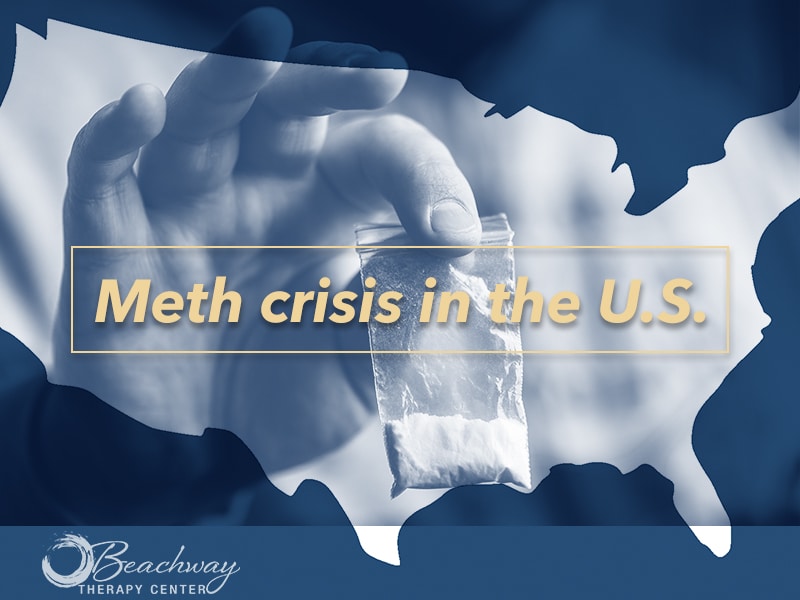
The continuing rise of Meth addiction in the U.S.
Methamphetamine Abuse in the USA
The war on drugs has always been prevalent but the target of this war changes through the decades. In the 1980s crack cocaine surged on the market. Then in the 90s and early 2000s meth made from pseudoephedrine, a decongestion found in drug stores became popular along with the television show “Breaking Bad” that glorified the drug trade. Narcotic squads spent their shifts in hazmat suits working to clean up the domestic meth labs. Congress in 2005 passed the “Combat Methamphetamine Act” that limited the over the counter pseudoephedrine sale to customers. This decreased the numbers of meth cases and the war turned to opiates like heroin and over the counter painkillers.
Though meth appeared to be dealt with, as the ingredients were now harder to get in the USA the cartels from Mexico started to bring in large quantities of already made meth into the USA. They perfected the chemistry of the drug and began selling it at low prices due to the increase in inventory and purity. Many people who were on crack cocaine would switch to meth, as it is better quality and half the price. Also, many people who use any other street drugs are also using meth. Though methamphetamines left the pubic eye for the opiate crisis it continues to very prevalent and wreaks havoc in many people’s lives.

Methamphetamine in the USA
According to a national survey from 2015 to 2019, methamphetamine use, frequent use, co-use with cocaine, and methamphetamine use disorder increased 43% to 105%. Furthermore, the 2017 National Survey on Drug Use and Health (NSDUH) found that approximately 1.6 million people in the USA reported using methamphetamines in the past year and 774 000 reported using it in the last month. The average age of new users is 23.3 years old. It is estimated that 964 000 people aged 12 and older have a methamphetamine use disorder in the USA. This means their drug use negatively impacts several areas of their life including work, home, school, health, and responsibilities. The number of people that are starting to abuse methamphetamines is continuing to rise each year.
Healing From Methamphetamine Substance Abuse
Despite the powerful addictive potential of methamphetamines people are able to quit and recover. Though this substance negatively impacts several areas of ones brain and mental health this can be healed. Research has shown that within 18 month of abstinence from the drug the brain starts to heal. Impulse control is one area of the brain that is damaged from drug use but with practice one can exercise and strengthen this area. Over time the reward centers of the brain will start to normalize and the individual will once again be able to feel pleasure without the drug.
The first few months of recovery will be the hardest but we are more resilient then we know and our brains have the ability to heal. It’s important to have a strong support network and to develop healthy habits such as exercise to aid healing and recovery. It is important to seek professional help such as therapy and support groups to create a recovery plan.


